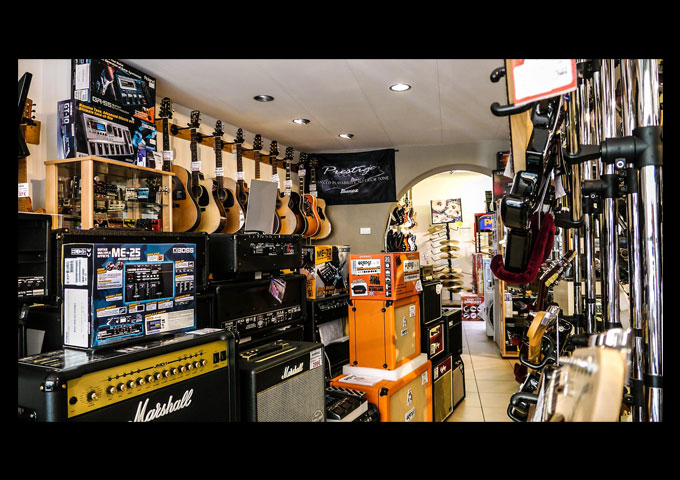The guitar amp is one of the accessories you should have if you are serious about the electric guitar. The amp increases the level of your guitar, and you should have it if you are doing general shows. It also allows you to modify the tone by confirming or de-emphasizing frequencies and adding special electronic effects—the amplifier functions in two stages. The first is a phase amp that amplifies the voltage of a guitar signal. The pre-amp stage allows electronic effects like distortion, echo, chorus, and controls like graphical equations. The second is the stage of the power amplifier that produces a higher current for the speaker.
There are things you must consider when buying a guitar amp.
Number of Controls
The number of controls can vary from one to about twelve, and more have been seen. In general, you will find the volume control, bass control, mid control, and high control. Sometimes the volume control will be named after the acquisition. In channel switched amplifiers, there is usually pre-amp control. These controls the amount of dirt or stains. If you are lucky enough to get a frequency amp, there will be a slider to adjust the amount of “echo” you hear. With amps containing more than this minimum number of controls, a separate set of tone controls is usually to the clean noise.
Amp Size and Power
These depend on the application you use and use for it. If you’re new to guitar playing and only use amps to practice, about 30 watts should be more than enough power. If you are more experienced or play in a band, you may want a 50 watt or even 100-watt amp.
Amount of Sound
When you buy a guitar amp, one of the things you need to find is sound production. A clear voice is desirable. There should be no hissing or cracking sound produced from the amp. A good guitar amp should not sound when not in use. They should also have basic controls like triple bass, volume and sound, echo function, and auxiliary inputs. This additional input will allow you to connect a CD or MP3 player to the amplifier.
Number of Channels
The amp generally comes with at least two channels, and some contain more. In general, amps have a clean channel and a compressed and excess channel. Each channel can achieve different distortion rates. Other amps use programs to create other standard amps. They are capable of producing a wide range of voices. These amps are stable, although most agree they don’t look as good as tube amps, they’ve been improving in recent years.
Amplifier Type
Two main types of amps are solid-state and tube amps. Most guitarists will tell you that tube amp sounds better, and I have to agree, although I think it’s a matter of taste. Tube amps tend to be more expensive to buy and require more maintenance than solid-state amps. The tubular tube, as the name implies, contains hollow tubes, which sometimes wear out and need to be replaced.
Additional Components
Guitar amps come with either a cabinet or a combo amp. The amp combo, as the name implies, is a closet and ahead together in one unit. Combo amps are generally smaller in size and take up less than half the stack, although amp manufacturers have come out with small batteries in recent years, comparable to the size of the combo amp.
Speakers
Some come with separate or combined speakers. The mix design has the amp and amps in one cabinet and is therefore preferred for transport. You can also choose a different type that has an amplifier placed on top of the speaker cabinet. This design is preferred if there are many speakers. You can also select acoustic guitar amps that have headphone jacks. That will let you listen to the guitar without disturbing others.
Conclusion
Your preference of amp will rely on your needs that are known to you; however, always ensure you have all the information needed. You can still buy top guitar amps with less than $500 online, and the various websites are designed to help buyers choose the right amps. So, what are you waiting for? This is the right time to buy the best guitar amp.











More Stories
SHARON MANUEL: “The Negro Speaks of Rivers” – A Testament to Legacy, Liberation, and the Lyrical Soul of a People
“Trance Reimagined: Marty Augustine’s Singularity Blends Rhythm with Reflection”
Orphic Illusion Redefines Midwest Metal with Debut Album